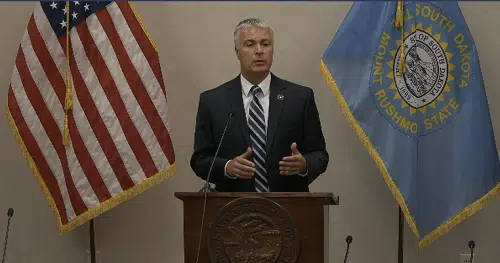Apple embraces artificial intelligence for devices, ChatGPT for Siri

Apple is a comparative latecomer to the artificial intelligence boom that kicked off nearly two years ago, but the tech giant has announced plans to catch up by adding AI capabilities across its apps and products, including a deal with OpenAI to incorporate the startup’s ChatGPT bot into Apple’s Siri personal assistant.
Apple CEO Tim Cook and other company executives made the announcements during the company’s annual developer conference in Cupertino on Monday. The highly anticipated step was accompanied by the announcement of a new operating system and a host of other features for iPhones, tablets and Mac computers.
In an AI industry rife with concerns over privacy, the presentation was heavy on promises to protect consumers. The new “Apple Intelligence” services will happen mostly within devices, rather than sending data to outside servers.
Article continues below this ad
“This is AI for the rest of us,” Apple senior VP of Software Engineering Craig Federighi said, outlining how AI programs will help compose messages and use photos and other personal content to create shareable, AI-generated images and emojis.
Using the language capabilities of AI, Apple and third-party apps will offer tools for rewriting emails and other text, including options such as making the tone friendlier, more professional, or more concise. Another feature will allow users to describe how they’d like a message written, with AI producing a draft based on those parameters.
Proofing messages and other writing before sending or posting will also be available, as will a summarization feature that promises to cut through the chaff in group chats, emails, and other content to draw out key points.
Microsoft’s Copilot and other AI programs already offer similar features, but Apple executives pitched programs that worked mainly from the data contained on personal devices, and which are therefore more tailored to individual needs, they said.
Microsoft is the largest investor in OpenAI and the earliest adopter of its GPT family of AI models, having already integrated the technology into a range of its software and apps.
Article continues below this ad
Apple also offered a glimpse of how it plans to use AI to create original images based on a user’s photo library. Three categories of sketch, illustration, and animation will be available to ask Apple’s AI to make an image of someone surrounded by balloons for their birthday for example, or sketch their mother in a superhero cape.
Users also will be able to create new emojis by describing them in text, and have them pop up in a matter of seconds.
AI’s ability to understand voice and broader context will also make it easier to find information, Federighi promised. Requests like “play that podcast my wife sent me last week” will make it easier to pull up hard-to-find information more quickly.
Siri executive Kelsey Petersen also described how the voice assistant will be able to respond to queries such as “what’s my lunch plan?” by pulling information out of messages and calendar events, along with answering questions about when a flight is landing or using traffic data to estimate drive times.
Because that kind of AI work requires a lot of computing power, the features will only be available on the iPhone 15 Pro, and iPad and Mac computers with Apple’s advanced chips.
Article continues below this ad
Federighi also said when handling a complex AI operation could not be done on the device, Apple’s “Private Cloud Compute” would process limited amounts of data on an outside server when necessary.
Siri’s integration with ChatGPT will mean that the app asks permission to use the flagship AI-powered app for answering broader questions, like coming up with a recipe or looking at a photo of a room and imagining how it could be designed.
That feature would apparently require processing on an outside server by OpenAI, but Federighi said that requests made though Siri using ChatGPT would “not be logged.”
Reach Chase DiFeliciantonio: chase.difeliciantonio@sfchronicle.com; Twitter: @ChaseDiFelice



